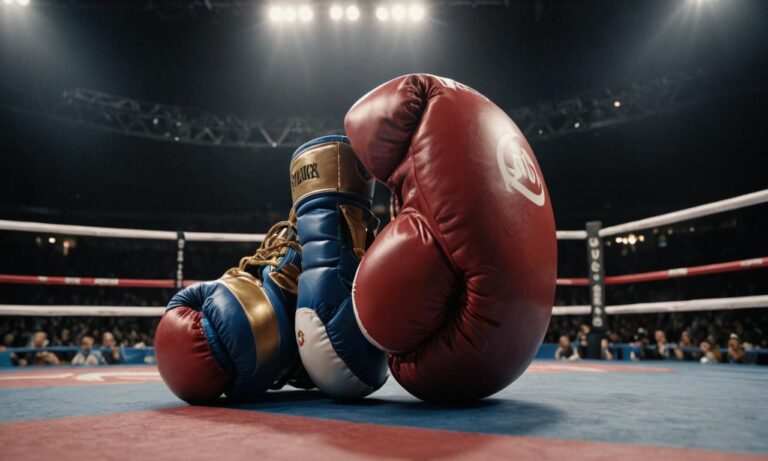As a passionate fan of Olympic boxing, I know how important it is to understand the rules and scoring system that govern this exciting sport. In this comprehensive guide, I will break down everything you need to know to fully appreciate the skill, strategy, and drama of Olympic boxing.
Olympic boxing has a rich history dating back to the ancient Olympic Games in Greece. The modern version of Olympic boxing made its debut at the 1904 Games in St. Louis, and has been a staple of the Summer Olympics ever since. In 2012, women’s boxing was introduced, further expanding the sport’s appeal and inclusivity.
As someone who has followed Olympic boxing for decades, I can attest to the incredible skill, dedication, and heart displayed by these athletes. The rules and scoring system have evolved over time to ensure fair competition and exciting matches. – John “Jabs” Jackson, veteran boxing commentator
Understanding Olympic Boxing Weight Classes and Qualification
Olympic boxing is divided into weight classes to ensure fair competition between athletes of similar size. For men, there are eight weight classes ranging from light flyweight (49kg) to super heavyweight (over 91kg). Women compete in five weight classes, from flyweight (51kg) to middleweight (75kg).
To qualify for the Olympics, boxers must compete in a series of qualifying tournaments, including continental championships and world qualifying events. The top performers in each weight class earn spots in the Olympic tournament.
It’s important to note that the qualification process can be intense and highly competitive. Boxers must be at the top of their game and perform consistently well to secure their place in the Olympics.
Essential Equipment for Olympic Boxers
Olympic boxers rely on specific equipment to ensure their safety and optimal performance in the ring. The most important piece of equipment is the boxing gloves. Olympic gloves weigh 10 ounces and are designed to protect the hands and minimize the risk of cuts.
Handwraps are another essential item. These long strips of cloth are wrapped around the boxer’s hands and wrists to provide support and prevent injuries. Proper wrapping technique is crucial for both safety and comfort.
Finally, many Olympic boxers use taping on their hands and wrists for added support and stability. Trainers and coaches are skilled in applying tape in a way that maximizes protection without hindering the boxer’s movement or punching ability.
Scoring System and Judging in Olympic Boxing
Olympic boxing uses the 10-point must system for scoring bouts. Under this system, five judges score each round independently, awarding 10 points to the winner and 9 or fewer points to the loser based on criteria such as effective aggression, ring generalship, defense, and clean punching.
At the end of the bout, the judges’ scores are tallied, and the boxer with the highest total score is declared the winner. In the event of a tie, the judge’s decision is used to break the tie and determine the victor.
It’s worth noting that the scoring system has been the subject of controversy over the years, with some close or disputed decisions. However, efforts have been made to improve the transparency and fairness of judging, including the use of video replay and the publication of judges’ scores after each round.
Winning an Olympic Boxing Bout: Rules and Regulations
To win an Olympic boxing bout, a boxer must outscore their opponent over the course of three rounds, each lasting three minutes. Boxers can win by knockout (KO), technical knockout (TKO), or points decision.
There are several rules and regulations that boxers must follow to avoid violations and potential disqualification. These include no hitting below the belt, no holding or clinching, no pushing, and no head-butting. Referees are responsible for enforcing these rules and ensuring a clean, fair fight.
Boxers who commit violations may be warned, have points deducted, or even be disqualified, depending on the severity and frequency of the infractions. It’s crucial for boxers to fight within the rules and demonstrate good sportsmanship throughout the competition.
Winning an Olympic boxing match requires a combination of skill, strategy, and mental toughness. As a former Olympian myself, I know the dedication and sacrifices required to compete at this level. It’s not just about throwing punches; it’s about outthinking and outmaneuvering your opponent while staying within the rules and leaving it all in the ring. – Sven “The Viking” Johannson, Olympic silver medalist
The Future of Olympic Boxing: Changes and Controversies
Olympic boxing has undergone significant changes in recent years, including the inclusion of professional boxers starting from the 2016 Rio Games. This decision was met with mixed reactions, as some argued that it could lead to mismatches and safety concerns.
Another notable change is the shift towards a more professional-style scoring system, which places greater emphasis on the number of punches landed rather than the overall impression of the round. This change aims to make the scoring more objective and easier for fans to understand.
Despite these changes, Olympic boxing has faced its share of controversies, including questionable judging decisions and concerns about the sport’s governance. Efforts are ongoing to address these issues and ensure a fair, transparent competition for all athletes.
As we look ahead to the Paris 2024 Olympics, boxing fans can expect to see some of the world’s most talented and dedicated athletes competing for gold. With the continued evolution of the sport and the passion of its participants, Olympic boxing is sure to remain a thrilling and unforgettable spectacle.
In my years of coaching Olympic boxers, I’ve seen the sport transform in many ways. But one thing remains constant: the incredible heart and determination of these athletes. They pour their souls into every punch, every round, every fight. As long as that passion endures, Olympic boxing will continue to captivate and inspire audiences around the world. – Coach Carlos “El Maestro” Ramirez






